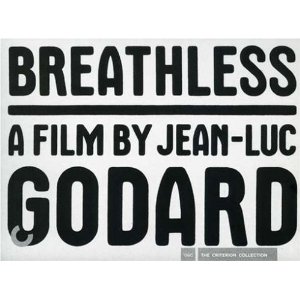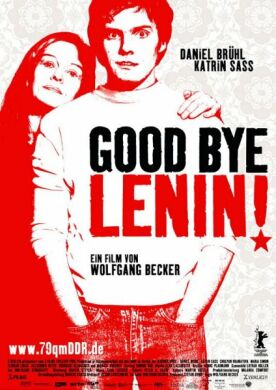Shockless
From The American SpectatorIn recent years, the Turner Prize for British artists under 50 has been awarded to (among others) Damien Hirst for the pickled bodies of a cow and calf that have been cut in half, to Chris Ofili for an image of the Virgin Mary adorned with elephant dung and to Grayson Perry, who models human genitalia in pottery while wearing women’s clothes. “One of my ambitions,” he once said, “is to make the penis as popular a decorative motif as the flower.“ That achievement, at least, has so far eluded him. To the British, such artistic high jinx seem for the most part to take place in a spirit of good fun, and there is a certain amount of self-mockery on the part of those who have given the Turner Prize the alternative name of “The Emperor’s New Clothes Prize” — perhaps out of respect for Joseph Mallord William Turner (1775-1851), after whom it was named. He, at least, was a real artist.
Those who take it more seriously, however, are not so much the artists themselves as a group of perpetually enraged and traditionally-minded rebels — if that’s not a contradiction in terms — calling themselves the “Stuckists,” a name implying that what they are stuck in is the mud. It was, at any rate, first applied by Tracey Emin — who didn’t win the Turner Prize when she entered her unmade bed in the competition in 1999 but became more famous than most of those who did — to an ex-boyfriend calling himself Billy Childish who went on to become one of the founders of the Stuckist movement. He and the other Stuckists eschew conceptualism and postmodernism for what they call “Remodernism,” and some might say that their manifesto claim that “artists who don’t paint aren’t artists” is more shocking than any amount of elephant dung. Unfortunately, it’s not the sort of shock that makes your work a media event, the way that that of even the runners-up among the conceptualists is.
In recent years, however, the Turner has shown signs of turning away from “weird for the sake of weird” — Moe Szyslak’s definition of postmodernism on “The Simpsons” — and back in the direction of those who can at least recognize the business end of a paintbrush. And this is a problem for the media, who obviously get a lot more mileage out of conceptual art than they do out of the traditional kind that doesn’t lend itself to headline coverage. As a result, the announcement in May of the short-list for this year’s Turner Prize was accompanied by the following lament from Alastair Sooke of The Daily Telegraph for the days when
many British artists made brash, splashy and provocative work that knowingly incited the media, and made for great television. Newspapers and broadcasters loved reporting their provocations, and artists loved dreaming up ever more outrageous antics to provide fodder for newspapers and broadcasters. It was a potent symbiosis. More recently, however, things have quietened down: last year’s winner, for instance, was Richard Wright, who makes gentle, exquisite wall paintings that are a world away from the headline-grabbing work of the YBAs [Young British Artists] who, championed by Charles Saatchi, dominated the 1990s. It’s as if collectively our attitude to contemporary art has mellowed and matured.
As you can tell from the tone here, Mr Sooke appears to have mixed feelings about all this. Art as media event has become so much what we mean by art these days that it is becoming difficult for us even to recognize it as art if it doesn’t automatically provoke outrage and denunciations from those who are, as Tracey Emin put it, “Stuck, stuck, stuck” with their outdated notions of art and public propriety. The trouble is that when outrage becomes predictable it ceases to be outrageous. The latest exhibition at the Tate Modern, for instance, titled Exposed: voyeurism, surveillance and the camera, which includes images of coitus, murder and torture, was respectfully reviewed in the arts pages but excited little comment otherwise.
“The great triumph of the Turner Prize was that, during the 1990s, it won a large audience for contemporary art in this country,” wrote Alastair Sooke. “But, now that this battle has been won, it faces a tricky problem: how can it sustain widespread interest when it no longer feels appropriate to describe the work that is shortlisted each year as ‘shocking’ or ‘controversial’?” The problem, in other words, is that art has become — as politics has lately shown signs of becoming — a mere adjunct of the celebrity culture and its worship of all that is sensational in style and vacuous in content and that we no longer know any other way to look at it.
As it happens, 2010 is also the fiftieth anniversary of Jean-Luc Godard’s Breathless (Á Bout de Souffle), a restored print of which was given a showing in New York and Los Angeles in May and June. Godard’s film did something similar for the movies, which provided the occasion for this rhapsody from A.O. Scott in The New York Times:
Even if you were not around to hear, let’s say, the catcalls greeting Stravinsky’s Rite of Spring, or to unwrap a copy of James Joyce’s Ulysses smuggled over from Paris in defiance of the postmaster general, or to examine Marcel Duchamp’s “Fountain” or Andy Warhol’s Campbell’s soup cans when they were first exhibited, the works themselves allow you to place yourself among the brave vanguard who did. And even if you did not see Breathless during its first run at the dawn of the ’60s, surely every frame carries an afterimage of that heady time, just as every jazz note and blast of ambient street noise on the soundtrack brings echoes of an almost mythic moment.
Golly! Of course, if you go back and look at the picture now without any particular awareness of the context in which it first appeared you might wonder what all the fuss is about. Jean-Paul Belmondo plays Michel Poiccard, a small-time thief and mugger who fantasizes about being Humphrey Bogart. When he is pulled over in a stolen car, he shoots the motorcycle cop with a gun he finds in the glove compartment. He appears to have no particular feelings about this, but we see him being hunted down by the Parisian police while he attempts to romance Patricia Franchini, an American gamine played by Jean Seberg, who has journalistic ambitions. In the end, after sleeping with him, she betrays him to the police and watches as he is gunned down in the street. Once again, neither of them appears to have much in the way of feelings, either about the sex or the killing.
Michel’s dreams of escape to Rome with Patricia and a satchel full of money become just another of his fantasies, like that of Bogartian cool, and do not rise to the level of genuine aspiration even when they seem about to be realized. The film, with its celebrated jump cuts and jazz score and commitment to emotional “cool” is not just all style and no substance but intended to be so. This is precisely what people like Mr Scott like about it. David Thomson, writing in The New Republic, is a little less giddy with excitement, acknowledging that “the really fresh thing about Breathless wasn’t that it cried out, ‘Look a brave new cinema made by young people, full of life and invention.’ No, it was a warning. It said (even in 1960), ‘Watch out, this game, this entertainment is over. Movie is all used up, and if we repeat it it will turn camp’.” Of course it turned camp — or postmodern, which is the son of camp — anyway, even if we didn’t repeat it. That’s the only reason we are still allowed to watch Turner Classic Movies or American Movie Classics on cable.
Still, Mr Thomson’s view seems a little excessive. If, as he says, Breathless “was one of the clearest statements to date (in 1960) that classical film was dead and over,” and that “we have really gone no further in our funeral observations in 50 years,” it seems a little odd that five of his own favorite films “of all time” as chosen for Sight and Sound in 2002 were made after 1960. If, indeed, “classical film” was “dead and over,” its death seems to have had no more resonance or significance than Mr Belmondo’s in the movie. I think what he means is that it was a sort of ritual death: one which must now be continually re-enacted, like that of youthful rebellion that I discussed in this space last month (see “Rebels Without a Clue” in The American Spectator of June, 2010) — and for the same reason, which is to recapture what Mr Scott calls the “mythic moment” of the revolutionary overthrow of the bourgeois order in which style took a back-seat to substance. We have to keep reminding ourselves of the potency of this myth lest we forget and find ourselves growing nostalgic for content and meaning. Maybe that’s what’s happening with the Turner Prize. I hope so, but I wouldn’t bet on it.
Discover more from James Bowman
Subscribe to get the latest posts to your email.







